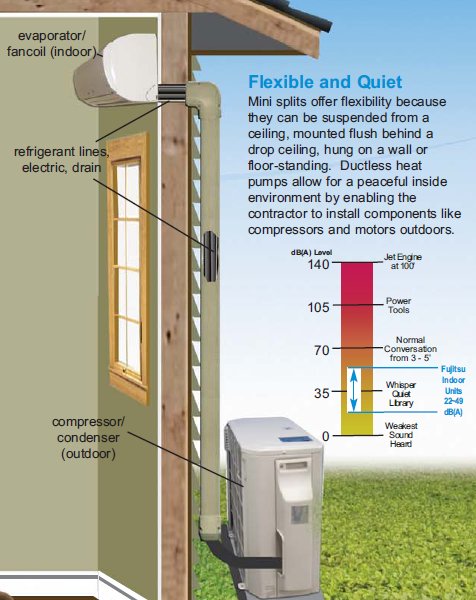Mini Split Units
- Home
- Mini Split

Is a mini-split unit right for your property?
- Do you need heating or cooling capabilities in a smaller space that does not have ductwork?
- Would you like the comfort of heating and cooling in a remote office or bedroom without the hassle of extending your primary HVAC system?
- Do you have a barndominium or outdoor office that needs a reliable heat and air source?
- If so, a ductless mini-split unit might be a good option.
What are mini-split HVAC units?
Ductless, mini–split-system heat pumps are commonly referred to as “mini splits”, or “mini-split units.” They make good retrofit add-ons to houses with “non-ducted” heating systems, such as hydronic (hot water heat), radiant panels, and space heaters (wood, kerosene, propane).

Mini-split units are ideal for home additions.
They can also be a good choice for room additions where extending or installing distribution ductwork is not feasible and very efficient new homes that require only a small space conditioning system. Be sure to choose an ENERGY STAR® compliant unit and hire an installer familiar with the product and its installation.
How does a mini-split work?
Like standard air-source heat pumps, mini splits have two main components — an outdoor compressor/condenser and an indoor air-handling unit. A conduit, which houses the power cable, refrigerant tubing, suction tubing, and condensate drain, links the outdoor and indoor units.
ADVANTAGES
The main advantages of mini splits are their small size and flexibility for zoning or heating and cooling individual rooms. Many models can have as many as four indoor air-handling units (for four zones or rooms) connected to one outdoor unit. The number depends on how much heating or cooling is required for the building or each zone (which in turn is affected by how well the building is insulated and air sealed). Each of the zones has its own thermostat, so you only need to condition occupied spaces. This will save energy and money.
Ductless mini-split systems are easier to install than some other types of space conditioning systems. For example, the hook-up between the outdoor and indoor units generally requires only a three-inch hole through a wall for the conduit. Most manufacturers of this type of system can provide a variety of lengths of connecting conduits, and, if necessary, you can locate the outdoor unit as far away as 50 feet from the indoor evaporator. This makes it possible to cool rooms on the front side of a house, but locate the compressor in a more advantageous or inconspicuous place on the outside of the building.
Mini-splits have no ducts, so they avoid the energy losses associated with the ductwork of central forced air systems. Duct losses can account for more than 30% of energy consumption for space conditioning, especially if the ducts are in an unconditioned space such as an attic.
In comparison to other add-on systems, mini splits offer more interior design flexibility. The indoor air handlers can be suspended from a ceiling, mounted flush into a drop ceiling, or hung on a wall. Floor-standing models are also available. Most indoor units are about seven inches deep and have sleek, high tech-looking jackets. Many also offer a remote control to make it easier to turn the system on and off when it’s positioned high on a wall or suspended from a ceiling.
Split systems can help keep your home safer because there is only a small hole in the wall. Through-the-wall and window-mounted room air conditioners can provide easy access for intruders.




